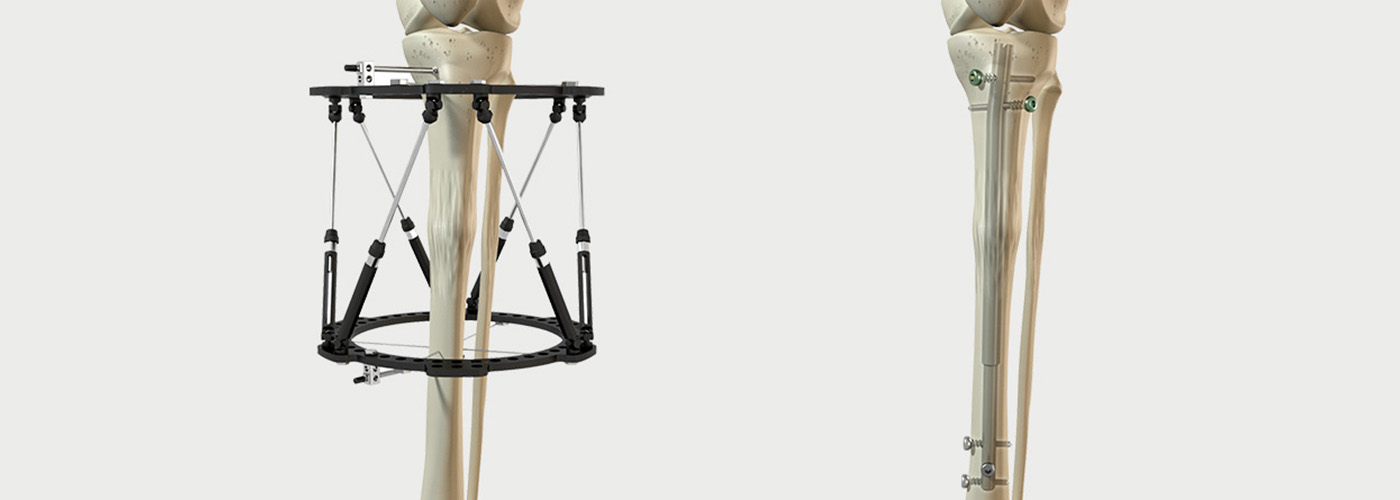Comparing External Fixation to Internal Lengthening
Before the introduction of the modern limb lengthening technology, our only option for leg lengthening involved the use of an external fixator or ex-fix, which involves scaffolding of sorts around the leg and pins attaching it to each side of the bone. Patients must manually crank the device daily to spread the bone further and allow the body to lay new bone within the gap.
An internal solution was developed to address many of the common concerns associated with an external fixator. Known as an intramedullary nail, we can now perform the lengthening from the inside out. Just as external fixation is a tried-and-true solution, the internal option has also been proven successful, with about 15,000 implants (trauma and deformity procedures included) performed since its inception.
As a leading trauma surgeon in Southern California, Dr. Basmajian has used both technologies to correct deformities and even handle complex trauma cases. Ultimately, deciding to use one device versus the other is a discussion that patients will have with Dr. Basmajian during consultation. For now, we will quickly discuss the benefits of each option so that you can begin to formulate an opinion on which direction may be best for you.


